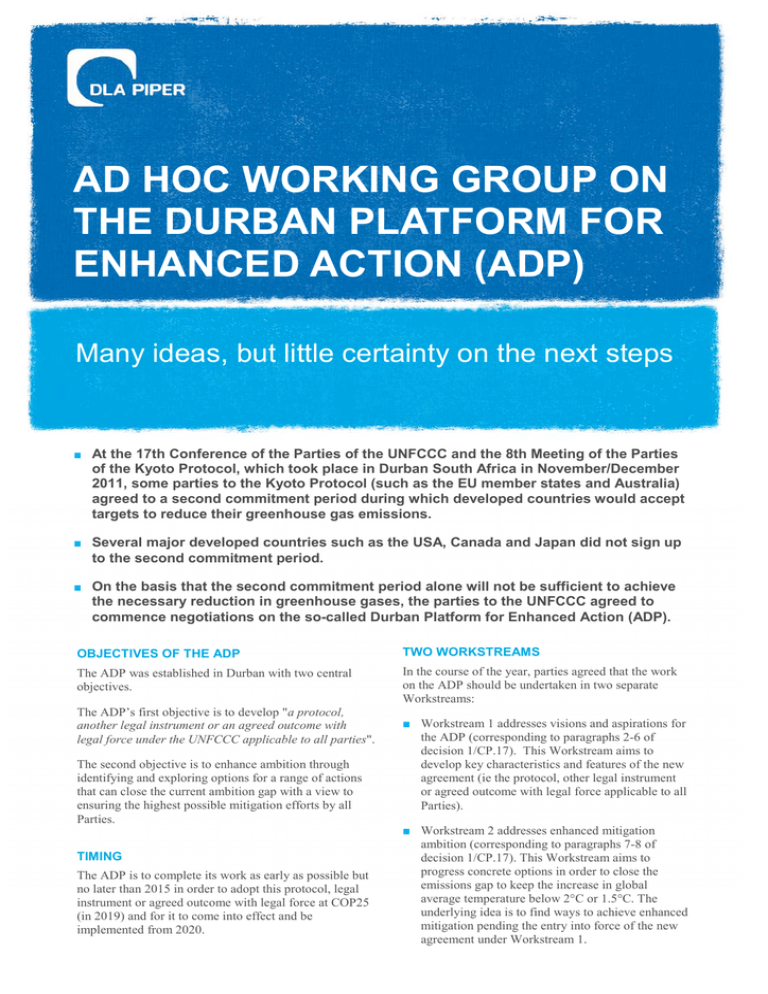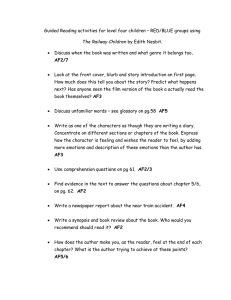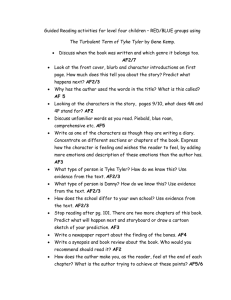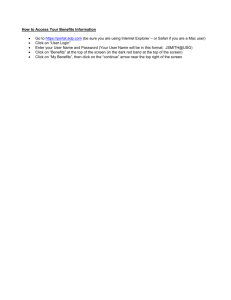
AD HOC WORKING GROUP ON
THE DURBAN PLATFORM FOR
ENHANCED ACTION (ADP)
Many ideas, but little certainty on the next steps
■ At the 17th Conference of the Parties of the UNFCCC and the 8th Meeting of the Parties
of the Kyoto Protocol, which took place in Durban South Africa in November/December
2011, some parties to the Kyoto Protocol (such as the EU member states and Australia)
agreed to a second commitment period during which developed countries would accept
targets to reduce their greenhouse gas emissions.
■ Several major developed countries such as the USA, Canada and Japan did not sign up
to the second commitment period.
■ On the basis that the second commitment period alone will not be sufficient to achieve
the necessary reduction in greenhouse gases, the parties to the UNFCCC agreed to
commence negotiations on the so-called Durban Platform for Enhanced Action (ADP).
OBJECTIVES OF THE ADP
TWO WORKSTREAMS
The ADP was established in Durban with two central
objectives.
In the course of the year, parties agreed that the work
on the ADP should be undertaken in two separate
Workstreams:
The ADP’s first objective is to develop "a protocol,
another legal instrument or an agreed outcome with
legal force under the UNFCCC applicable to all parties".
The second objective is to enhance ambition through
identifying and exploring options for a range of actions
that can close the current ambition gap with a view to
ensuring the highest possible mitigation efforts by all
Parties.
TIMING
The ADP is to complete its work as early as possible but
no later than 2015 in order to adopt this protocol, legal
instrument or agreed outcome with legal force at COP25
(in 2019) and for it to come into effect and be
implemented from 2020.
■ Workstream 1 addresses visions and aspirations for
the ADP (corresponding to paragraphs 2-6 of
decision 1/CP.17). This Workstream aims to
develop key characteristics and features of the new
agreement (ie the protocol, other legal instrument
or agreed outcome with legal force applicable to all
Parties).
■ Workstream 2 addresses enhanced mitigation
ambition (corresponding to paragraphs 7-8 of
decision 1/CP.17). This Workstream aims to
progress concrete options in order to close the
emissions gap to keep the increase in global
average temperature below 2°C or 1.5°C. The
underlying idea is to find ways to achieve enhanced
mitigation pending the entry into force of the new
agreement under Workstream 1.
BANGKOK MEETING IN OCTOBER 2012
WORKSTREAM 2: INITIAL STEPS
During a negotiation session in Bangkok in October 2012
parties exchanged views on what countries envisaged for
a post-2020 regime. The Co-Chairs of the ADP have
drafted summary notes on the roundtables for both
workstreams, providing an indication of where views
between the countries differed (the summaries of the CoChairs of each workstream can be found at: http://
unfccc.int/meetings/doha_nov_2012/session/7055.php)
In addition to the elements already highlighted,
discussions under Workstream 2 centred on developing
new quantitative emission limitation and reduction
obligations (QELROs). For developing countries, the
discussion addressed, among others, nationally
appropriate mitigation actions (NAMAs) and the
generation of the means allowing for their
implementation.
ADP AND LCA
Progress under the ADP largely hinges upon
developments in a separate negotiation stream: the Ad
Hoc Working Group on Long Term Cooperative Actions
(AWG-LCA). The AWG-LCA is set to expire at the end
of this year, even though certain agenda items have not
been resolved. These items include many priority issues
for developing countries, including on equity and
technology development and transfer regarding
intellectual property rights (IPRs). Many developed
countries, including most prominently the USA, have no
interest in seeing further negotiations on these agenda
items. There is widespread speculation that limited
progress will be seen in ADP until Parties reach
resolution on whether these agenda items are moved
under ADP, continue under LCA, or expire with the
termination of LCA.
WORKSTREAM 1: DIVERGING VIEWS
The main point of contention was whether historical
responsibility should be a key determinant of future
commitments. Developed countries emphasised that the
principles should be applied in a contemporary context
and that, while these principles were enduring, they were
also dynamic, ie it is simplistic to categorise countries as
"developed" or "developing". There was a general
recognition that universal application of the future
outcome should not mean uniformity of application, and
that differing national circumstances would need to be
accommodated. Not surprisingly, there was
disagreement on how such an accommodation could be
achieved.
Additionally, diverging views were expressed as to what
extent the ADP would need to take up negotiations on all
pillars of the Bali Action Plan. Some developing
countries indicated that the elements currently under
consideration at the AWG-LCA negotiations should be
taken up under the ADP once the AWG-LCA finishes its
work. Some developed countries opposed this and
indicated that mitigation should be at the centre of the
ADP agreed outcome.
02
Specific ideas have been floated, eg reduction of GHG in
international transport, reduction of production and use of
HFCs, reduced use of fossil fuels, enhancing energy
efficiency, promoting renewable energy and encouraging
further work on international sustainability standards and
ecolabelling.
ELEMENTS ON THE TABLE IN DOHA
Additional key questions for the workstreams were
highlighted by the Co-Chairs in a recent reflection note:
■ Workstream 1:
■
How the principles of the UNFCCC will be
applied in the new agreement.
■
How national circumstances and changes therein
should be taken into account.
■
How the new agreement will be "applicable to
all" in practice, including approaches to defining
differentiated commitments.
■
Ways to incentivise full and ambitious
participation and ensure effective
implementation and compliance arrangements.
■ Workstream 2:
■
How to increase the ambition of existing pledges
from Parties and encourage those who have not
yet submitted their pledges to do so.
■
How international and national actions that are
additional and are therefore supplementary to the
pledges that Parties have made can be
strengthened, encouraged, and supported by the
Convention.
■
Ways to undertake more in-depth work,
including technical and quantitative analysis of
options to increase ambition.
■
Ways to incentivise mitigation actions and
ensure effective implementation.
EXPECTATIONS: HOW MUCH PROGRESS IS
REALISTIC
■ Given the early stage of the ADP negotiations and the
uncertainty around what legal form ADP’s post-2020
framework should take, we may not see significant
progress this COP. Eg, the Co-Chairs propose to
continue negotiations through roundtable discussions
and informal consultations. The aim of the Co-Chairs
is to have a draft text ready summarising the informal
consultation by the end of the week.
■ As highlighted above, further progress in ADP
depends on the closure of the AWG-LCA and AWGKP. Developments in these working groups will
provide clarity on how the ADP should proceed in
and beyond 2013.
DLA Piper will continuously monitor the developments
in this area. If you have any questions related to this or
other issues addressed at the Climate Change
Conferences please check our website or contact us
directly.
KEY CONTACT
Alexander Sarac
Legal Director
T +44 (0)20 7153 7729
alexander.sarac@dlapiper.com
■ Some Parties question whether Doha needs a
negotiated outcome on post-2020 action in order to be
a success. The Umbrella group (including US,
Russia, Japan) states that a negotiated outcome is not
necessary to achieve the same result, and could
distract serious time and attention from more
important substantive discussions on the future
agreement and mitigation ambition in Doha.
■ One proposal to watch is a suggestion from the EU
that Parties should prioritise the design of a spectrum
of commitments, such that all Parties can take on
binding, fair and ambitious obligations in accordance
with their responsibilities and capabilities. This is the
example of a result that, while not a negotiated
outcome, could still be extremely helpful in providing
a concrete foundation for more detailed negotiations
in the future.
This publication is intended as a general overview and discussion of the subjects dealt with. It is not intended to be, and should not be used as, a
substitute for taking legal advice in any specific situation. DLA Piper will accept no responsibility for any actions taken or not taken on the basis of this
publication. If you would like further advice, please speak to [
] [your DLA Piper contact] on 08700 111 111.
www.dlapiper.com
DLA Piper is a global law firm operating through various separate and distinct legal entities. For further information
please refer to www.dlapiper.com
Copyright ©2012 DLA Piper. All rights reserved. | NOV 12 | Ref: 14585994






